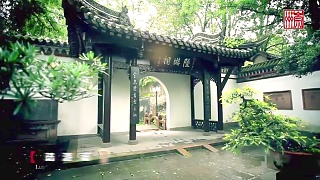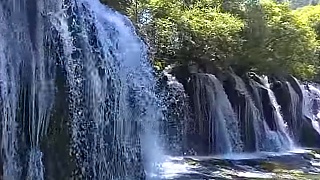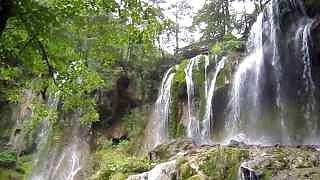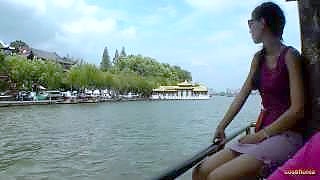Overview
ChengDu (成都) is the capital city of SiChuan province in south-west China. Known for its spicy cuisine, relaxed lifestyle, and panda conservation centers, ChengDu offers a unique blend of modernity and tradition.
Top Attractions
- Chengdu Research Base of Giant Panda Breeding (成都大熊猫繁育研究基地) - Chéngdū Dàxióngmāo Fányù Yánjiū Jīdì
- Jinli Ancient Street (锦里古街) - Jǐnlǐ Gǔjiē
- Wuhou Shrine (武侯祠) - Wǔhóu Cí
- Qingcheng Mountain (青城山) - Qīngchéng Shān
- Dujiangyan Irrigation System (都江堰) - Dūjiāngyàn
- Wide and Narrow Alleys (Kuanzhai Alley) (宽窄巷子) - Kuānzhǎi Xiàngzi
- Sichuan Opera and Face Changing Show (川剧变脸) - Chuānjù Biànliǎn
- Chengdu People's Park (成都人民公园) - Chéngdū Rénmín Gōngyuán
- Chunxi Road (春熙路) - Chūnxī Lù
- Song Xian Qiao Antique Market (宋庆龄故居松仙桥古玩市场) - Sòng Qìnglíng Gùjū Sōngxiānqiáo Gǔwàn Shìchǎng
- Wenshu Monastery (文殊院) - Wénshū Yuàn
- Mt. Emei (峨眉山) - Éméi Shān (Day trip from Chengdu)
Dining Experiences
- Hot Pot (火锅) - Huǒguō
- Sichuan Cuisine (川菜) - Chuāncài
- Tea Houses (茶馆) - Cháguǎn
- Huangcheng Laoma (Old Master Huang's Restaurant) (黄城老妈) - Huángchéng Lǎomā
- Yulin Life Plaza Food Street (玉林生活广场美食街) - Yùlín Shēnghuó Guǎngchǎng Měishí Jiē
- Long Chaoshou Restaurant (Dragon's Wonton Restaurant) (龙抄手) - Lóng Chāoshǒu
Shopping and Entertainment
- Chunxi Road Shopping District (春熙路购物区) - Chūnxī Lù Gòuwù Qū
- Taikoo Li (太古里) - Tàigǔlǐ
- IFS (International Finance Square) (国际金融中心) - Guójì Jīnróng Zhōngxīn
- Sichuan Opera and Tea Culture Show (川剧茶艺表演) - Chuānjù Cháyì Biǎoyǎn
- Chengdu Global Center (成都环球中心) - Chéngdū Huánqiú Zhōngxīn
- Chengdu IFS Ice Fountain (IFS冰雪奇缘) - IFS Bīngxuě Qíyuán
- Chengdu New Century Global Center (成都世纪环球中心) - Chéngdū Shìjì Huánqiú Zhōngxīn
- Tianfu New Area (天府新区) - Tiānfǔ Xīn Qū
. Tianfu New Area is a rapidly developing region known for its modern architecture, innovative industries, and urban planning.
Nightlife and Entertainment
- Wide and Narrow Alleys (Kuanzhai Alley) (宽窄巷子) - Kuānzhǎi Xiàngzi
- Jiuyanqiao Bar Street (九眼桥酒吧街) - Jiǔyǎnqiáo Jiǔbā Jiē
- Lan Kwai Fong Chengdu (成都兰桂坊) - Chéngdū Lánguìfāng
- Heming Teahouse (Hemingway Bar) (海明茶馆) - Hǎimíng Cháguǎn
- Chengdu Sino-Ocean Taikoo Li (成都远洋太古里) - Chéngdū Yuǎnyáng Tàigǔlǐ
Practical Tips
- Transportation: Use the Chengdu metro system, buses, or taxis for getting around.
- Language: Mandarin is the primary language; learn some basic phrases.
- Weather: Chengdu has a mild climate, but prepare for occasional rain, especially in summer.
- Currency: Use local currency (Renminbi).
- Panda Visits: Plan your visit to the panda base early in the morning for the best panda viewing.
- Respect Local Customs: Embrace the laid-back lifestyle and tea culture of Chengdu.
Hidden Gems
- Chengdu Culture Park (成都文化公园) - Chéngdū Wénhuà Gōngyuán
- Chengdu Panda Asian Food Festival (成都国际熊猫美食节) - Chéngdū Guójì Xióngmāo Měishí Jié
- Anshun Bridge Night Market (安顺廊桥夜市) - Ānshùn Lángqiáo Yèshì
Enjoy exploring Chengdu's rich culture, delicious cuisine, and the adorable giant pandas!
Chengdu, the capital of Sichuan Province in southwest China, is a vibrant city known for its rich history, spicy cuisine, and relaxed lifestyle. Here's a guide for tourists visiting Chengdu:
Cultural and Historical Attractions:
Chengdu Research Base of Giant Panda Breeding: One of the most popular attractions in Chengdu, this conservation center allows visitors to observe giant pandas in a semi-natural habitat.
Jinli Ancient Street: Located next to Wuhou Shrine, Jinli Ancient Street is a bustling pedestrian street lined with traditional Sichuan-style buildings, shops, teahouses, and street food stalls.
Wuhou Shrine: Dedicated to Zhuge Liang, a famous military strategist of the Three Kingdoms period, and Liu Bei, the emperor of the Shu Kingdom, Wuhou Shrine is a historic complex with beautiful gardens and ancient architecture.
Du Fu Thatched Cottage: This museum and park commemorates the Tang Dynasty poet Du Fu and features reconstructions of his former residence and gardens.
Culinary Delights:
Sichuan Cuisine: Chengdu is renowned for its spicy and flavorful Sichuan cuisine. Don't miss the opportunity to try local specialties like mapo tofu, hot pot, and dandan noodles.
Hot Pot: Chengdu's hot pot is famous nationwide. Enjoy a communal dining experience where you cook various meats, vegetables, and other ingredients in a bubbling pot of spicy broth.
Natural Beauty:
Mount Qingcheng: Located about an hour's drive from Chengdu, Mount Qingcheng is one of the birthplaces of Taoism and offers picturesque hiking trails, ancient temples, and serene scenery.
Jiuzhaigou Valley: While it's a bit further from Chengdu (requiring a flight or long bus ride), Jiuzhaigou Valley is a UNESCO World Heritage Site known for its stunning turquoise lakes, waterfalls, and colorful forests.
Modern Attractions:
Chengdu Research Base of Tianfu Giant Panda Breeding: In addition to the Giant Panda Breeding Base, this newer facility focuses on breeding and research for giant pandas and other endangered species.
Sichuan Opera: Experience traditional Sichuan opera performances featuring colorful costumes, face-changing (bian lian) techniques, acrobatics, and puppet shows.
Practical Tips:
Transportation: Chengdu has an efficient public transportation system, including a subway and buses. Taxis and ride-hailing services like DiDi are also readily available.
Weather: Chengdu has a humid subtropical climate with mild winters and hot, humid summers. It's advisable to check the weather forecast before your trip and pack accordingly.
Language: While Mandarin is the official language, the local dialect in Chengdu is Sichuanese. English may not be widely spoken outside of tourist areas, so consider learning a few basic phrases or carrying a translation app.
Chengdu offers a blend of cultural heritage, culinary delights, and natural beauty, making it an enticing destination for travelers seeking an authentic Chinese experience. Whether you're exploring historic sites, savoring spicy cuisine, or marveling at the region's natural wonders, Chengdu is sure to leave a lasting impression.
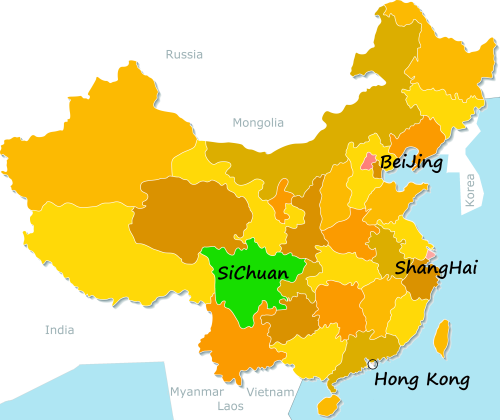
 ChengDu city guide
ChengDu city guide



